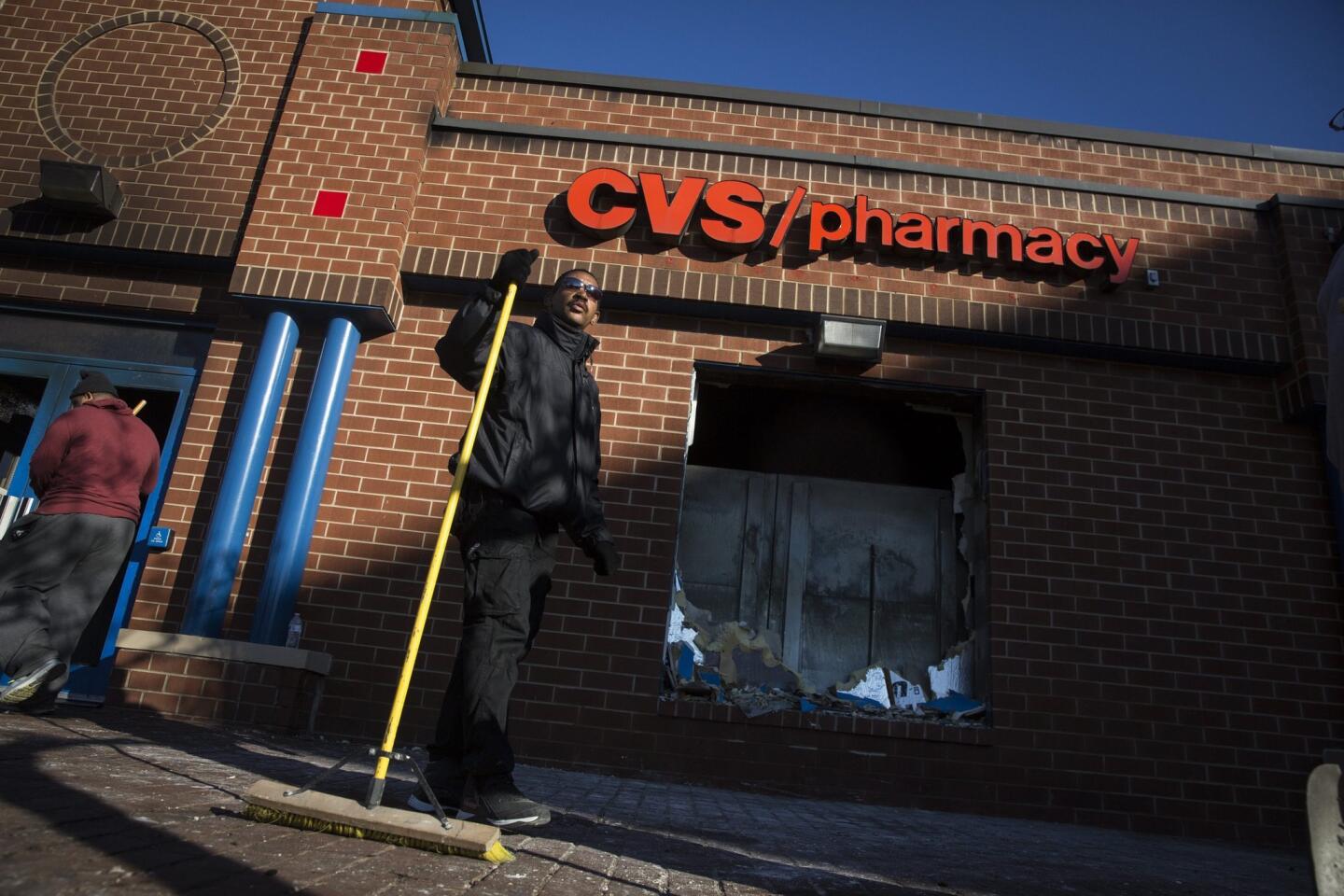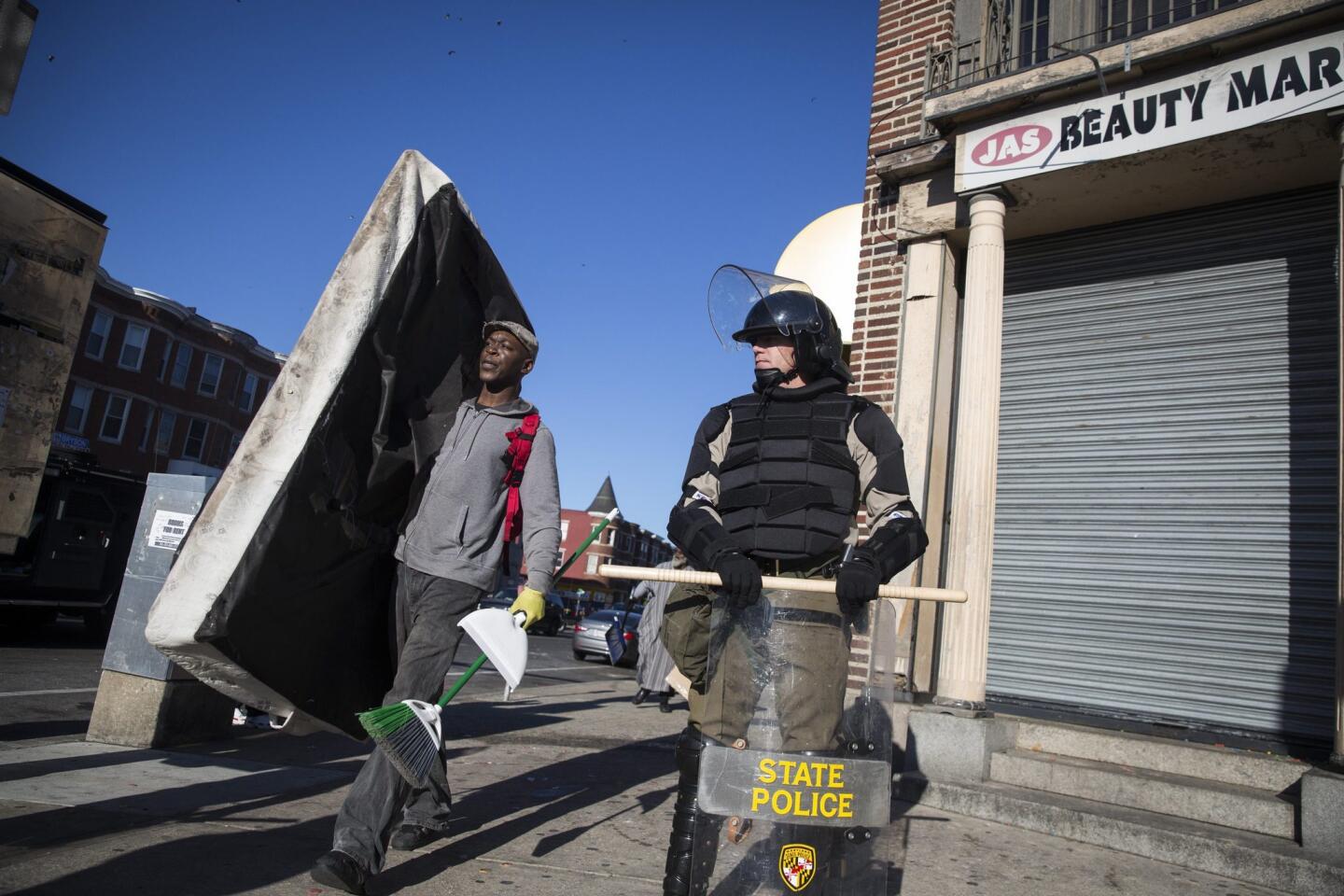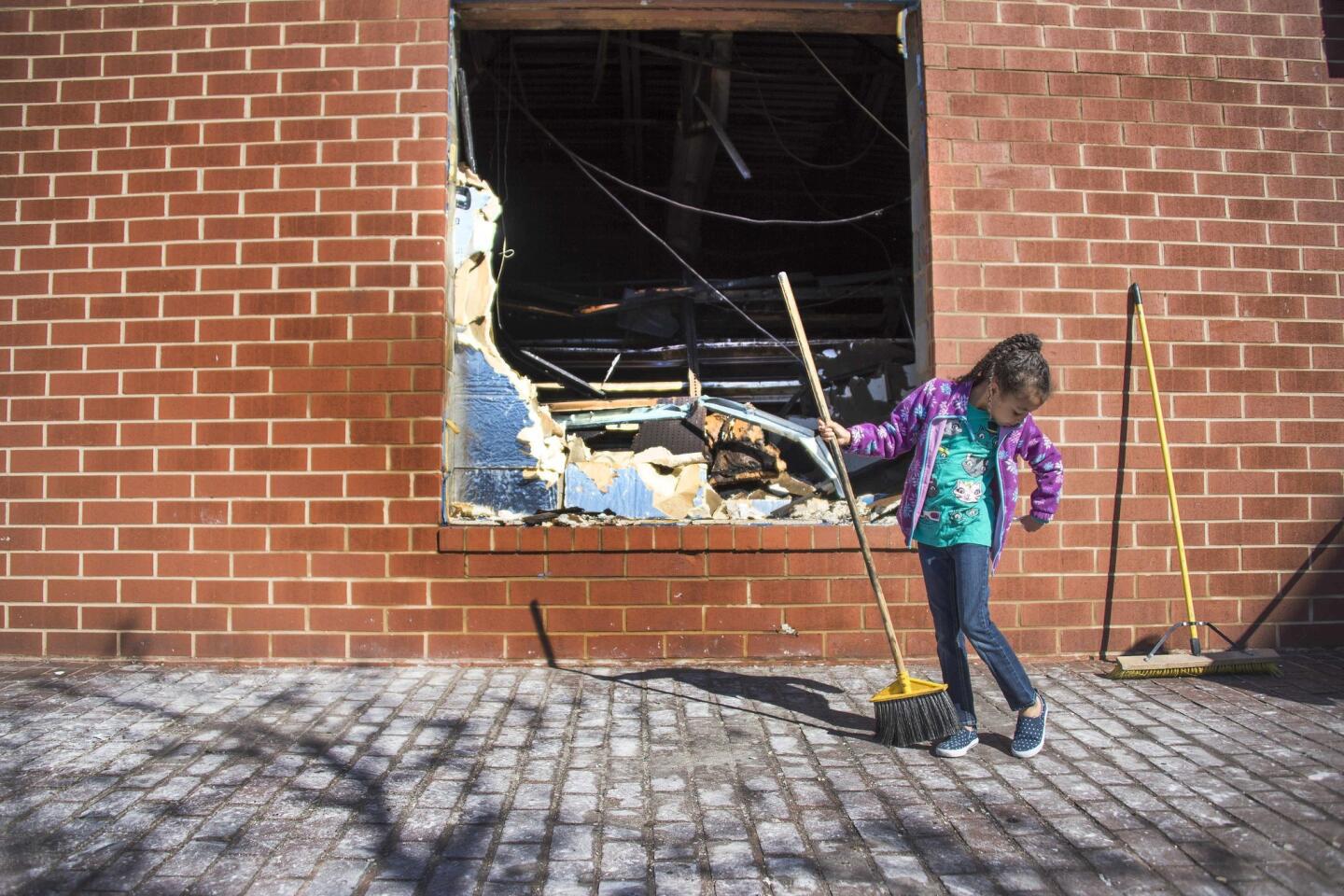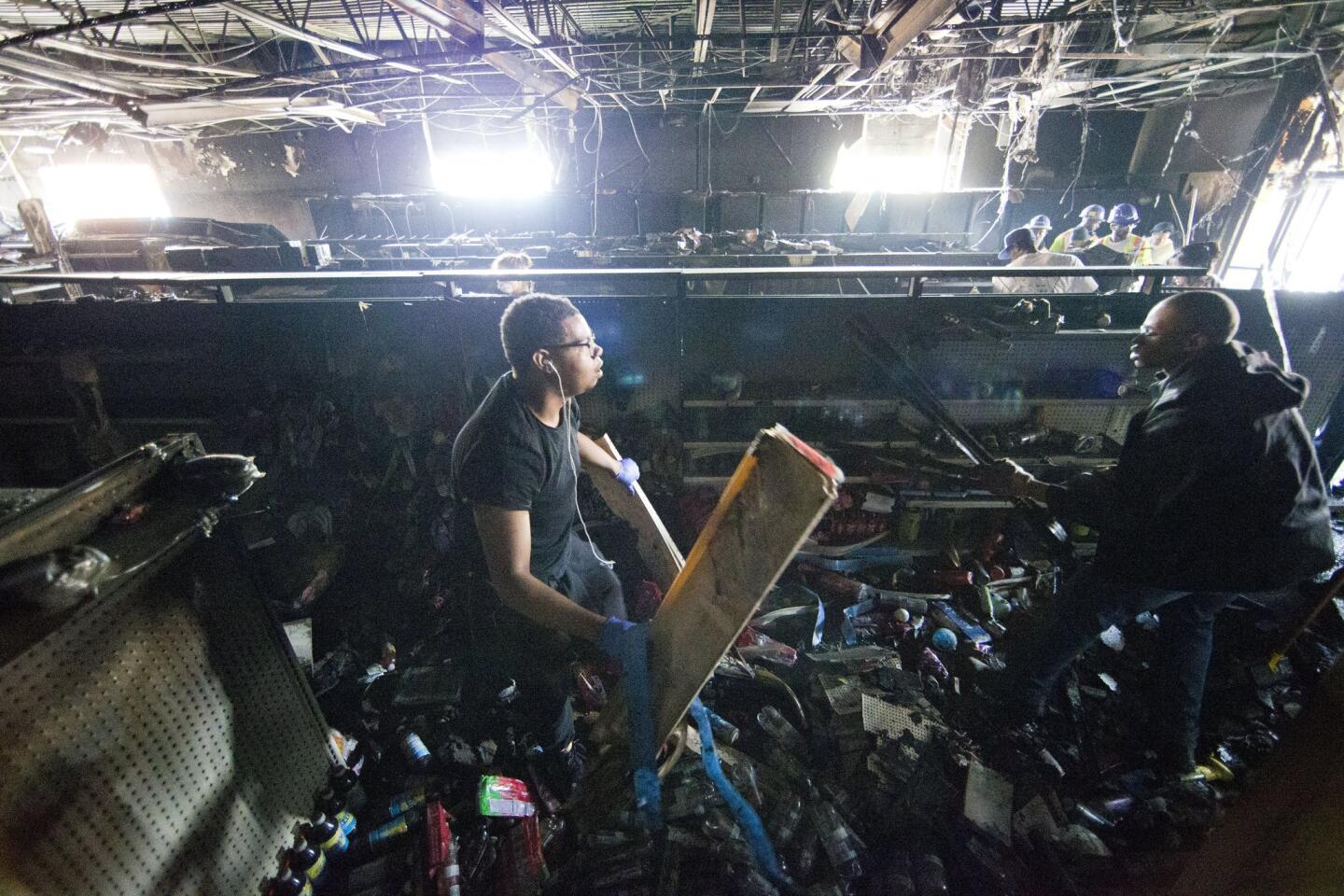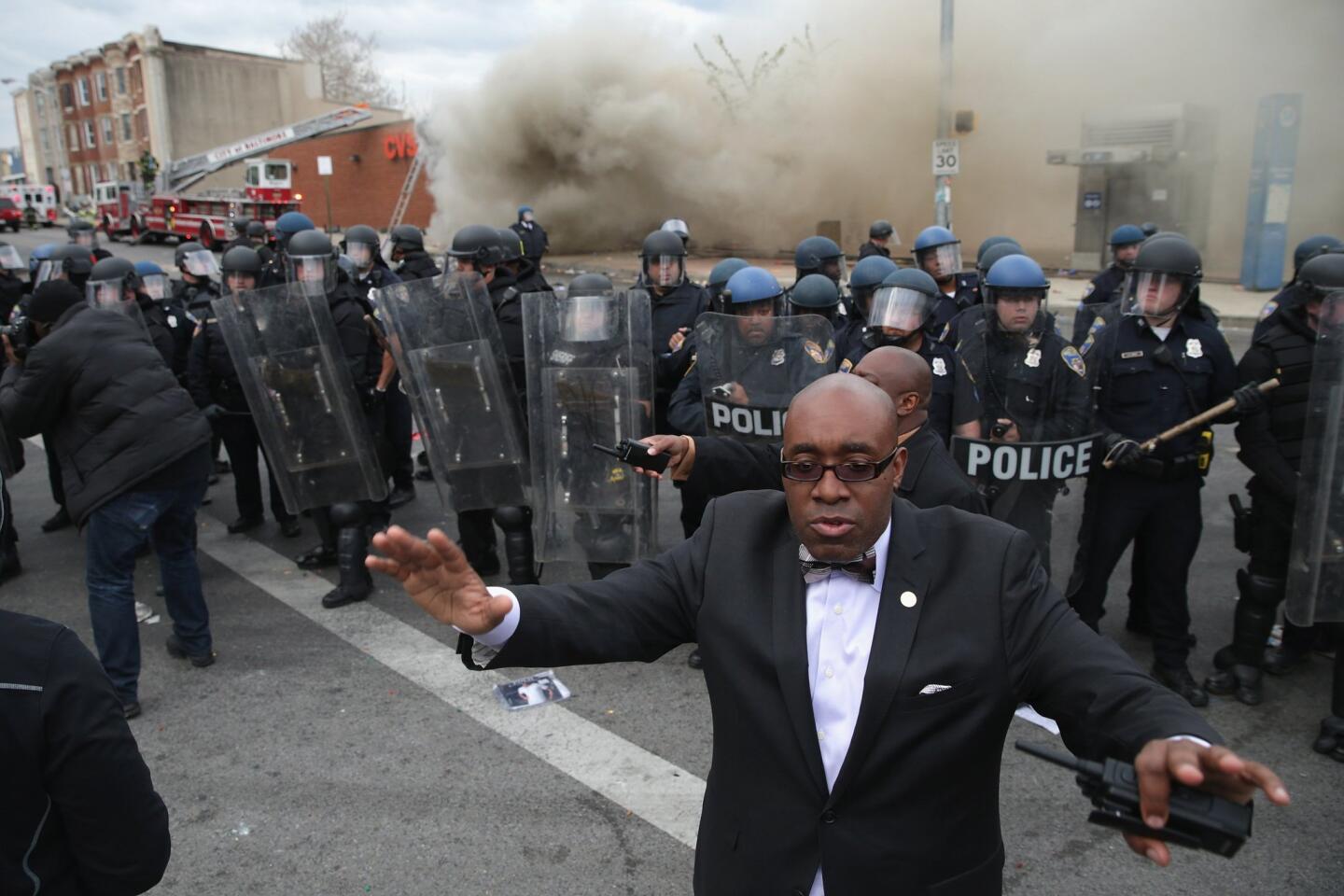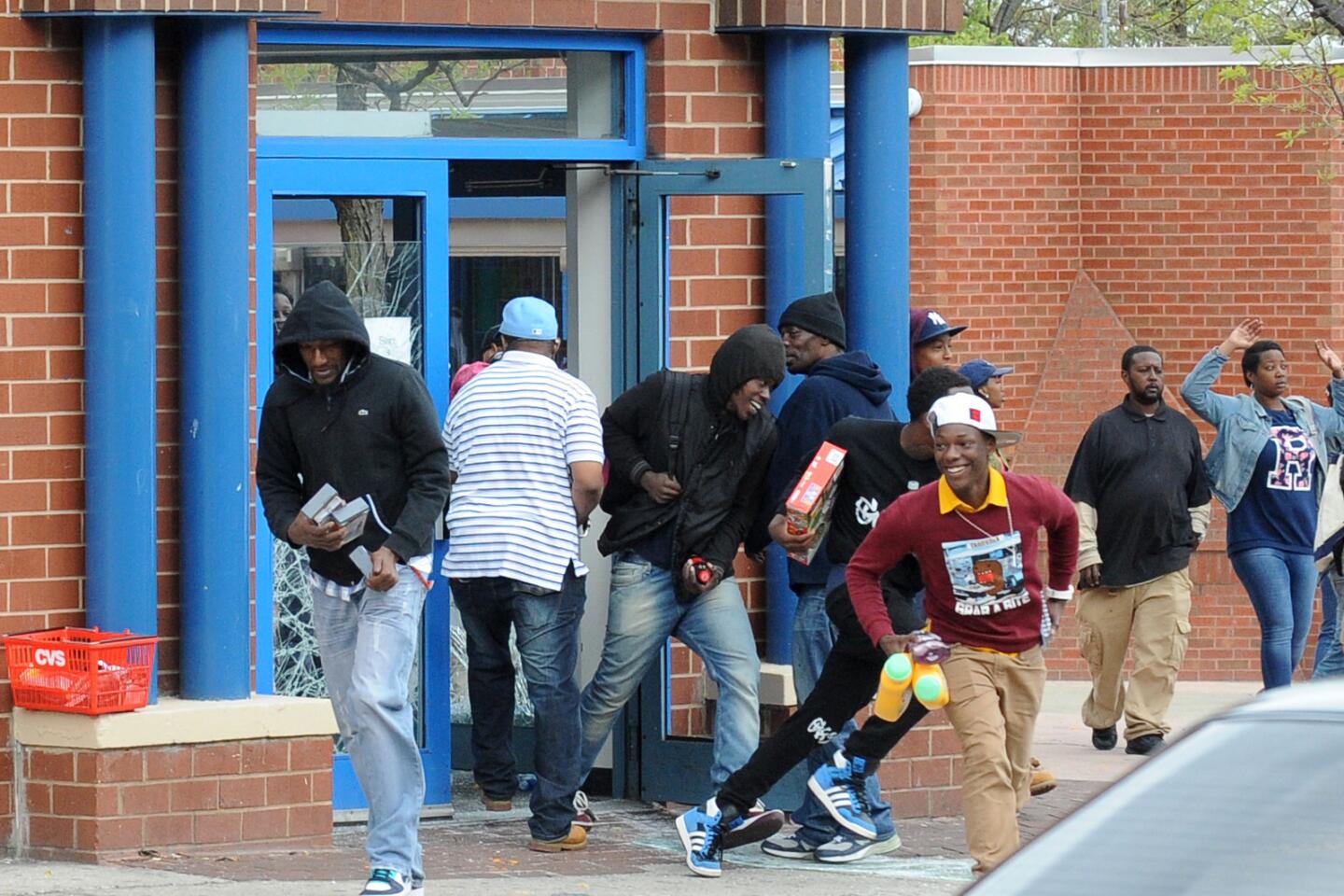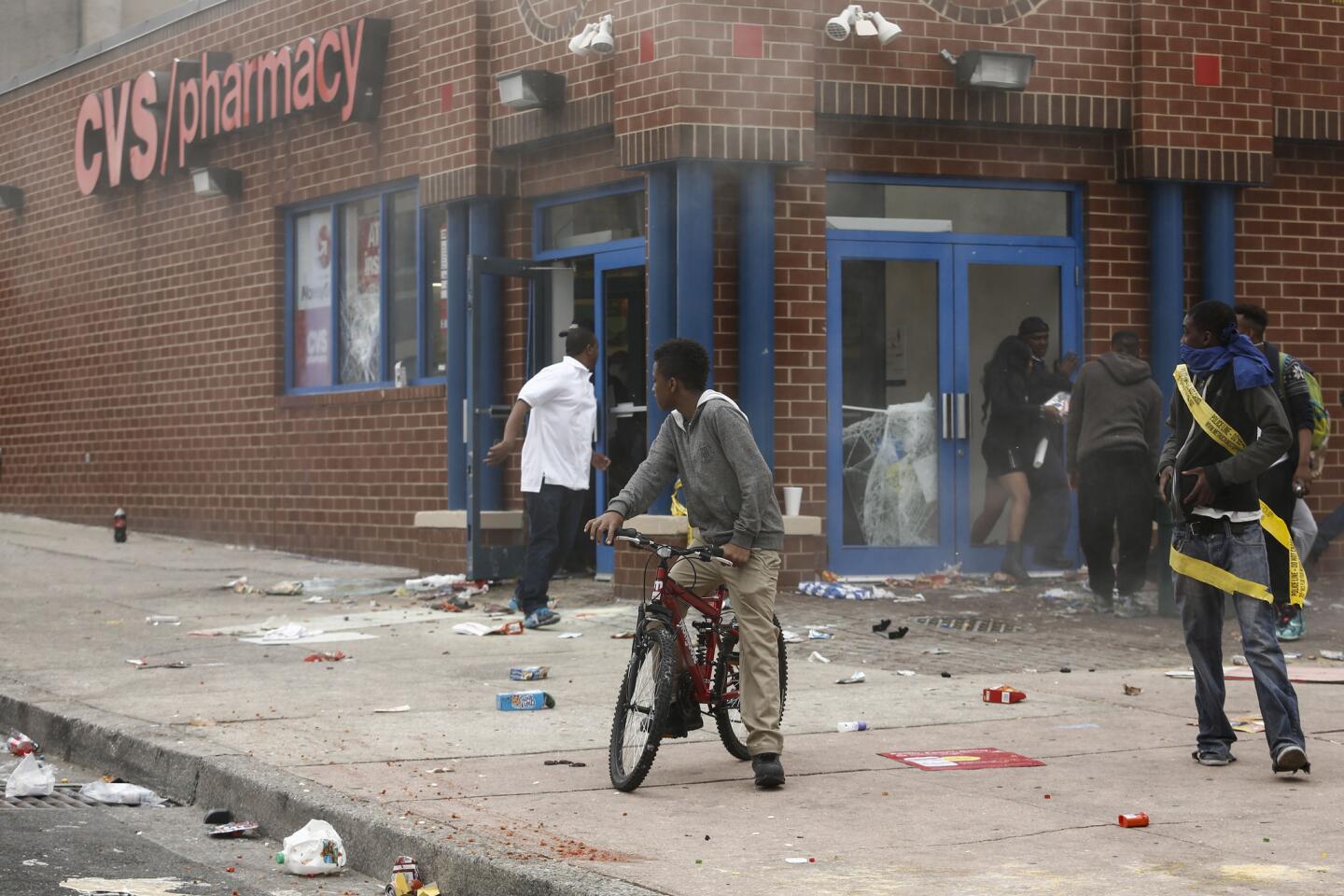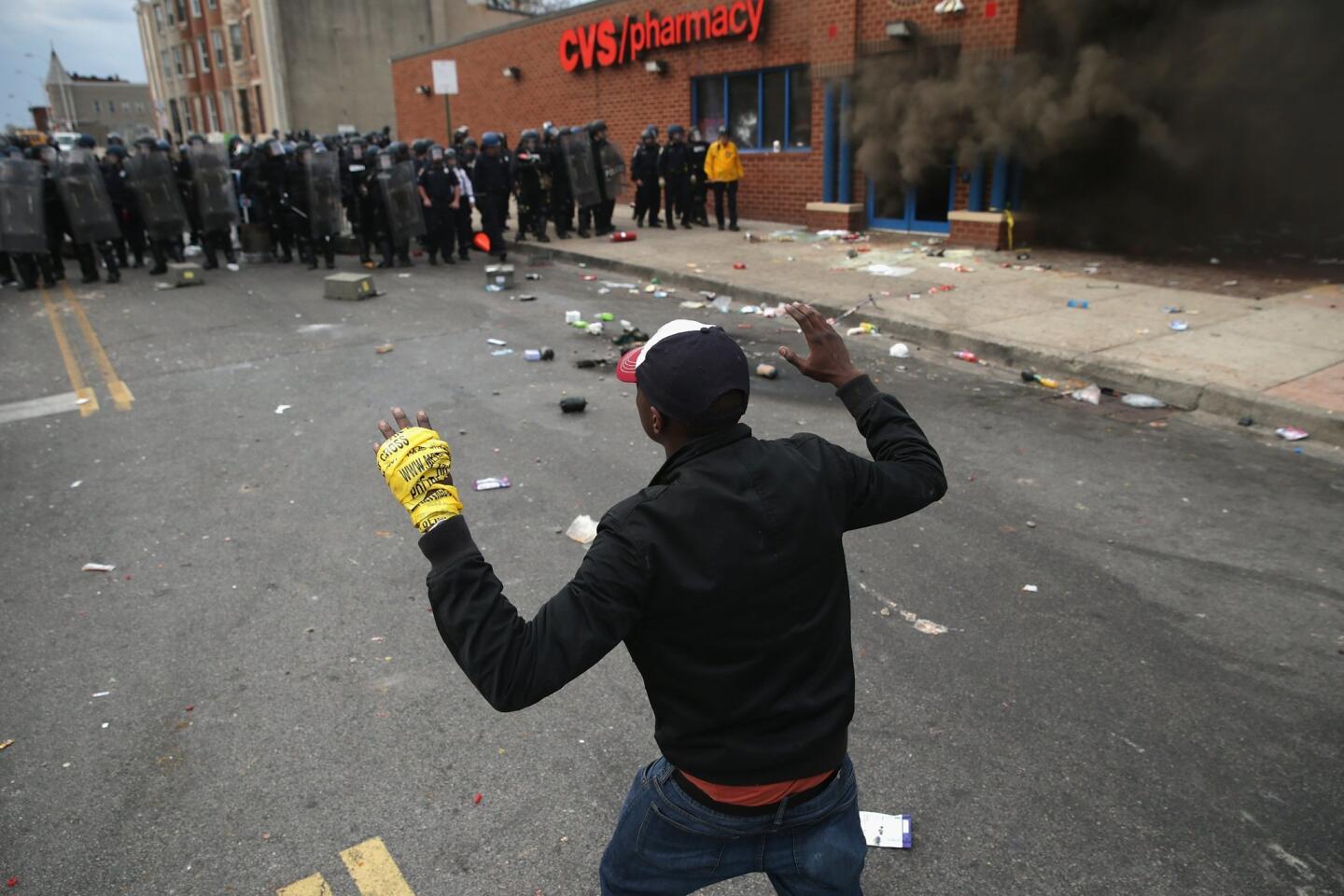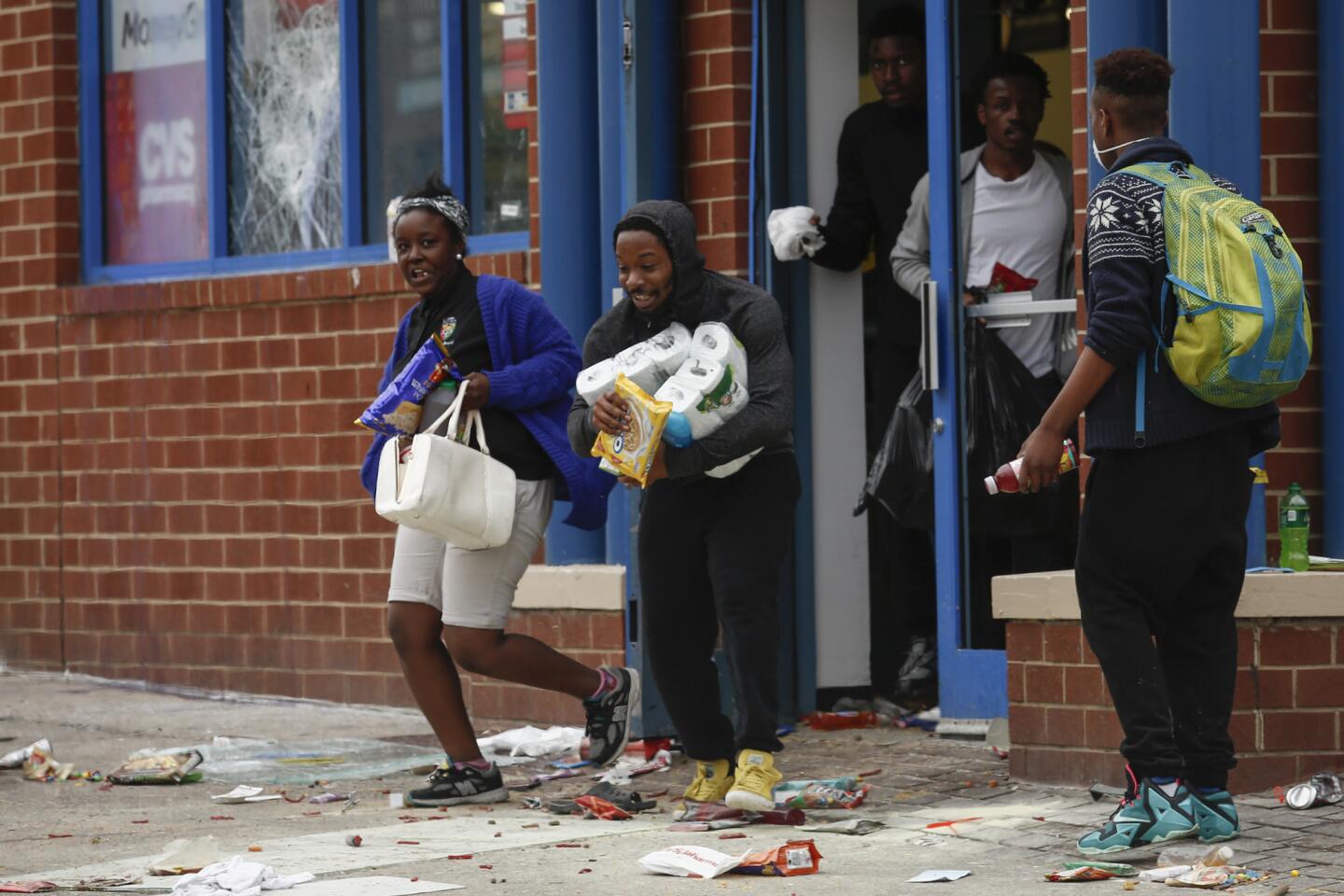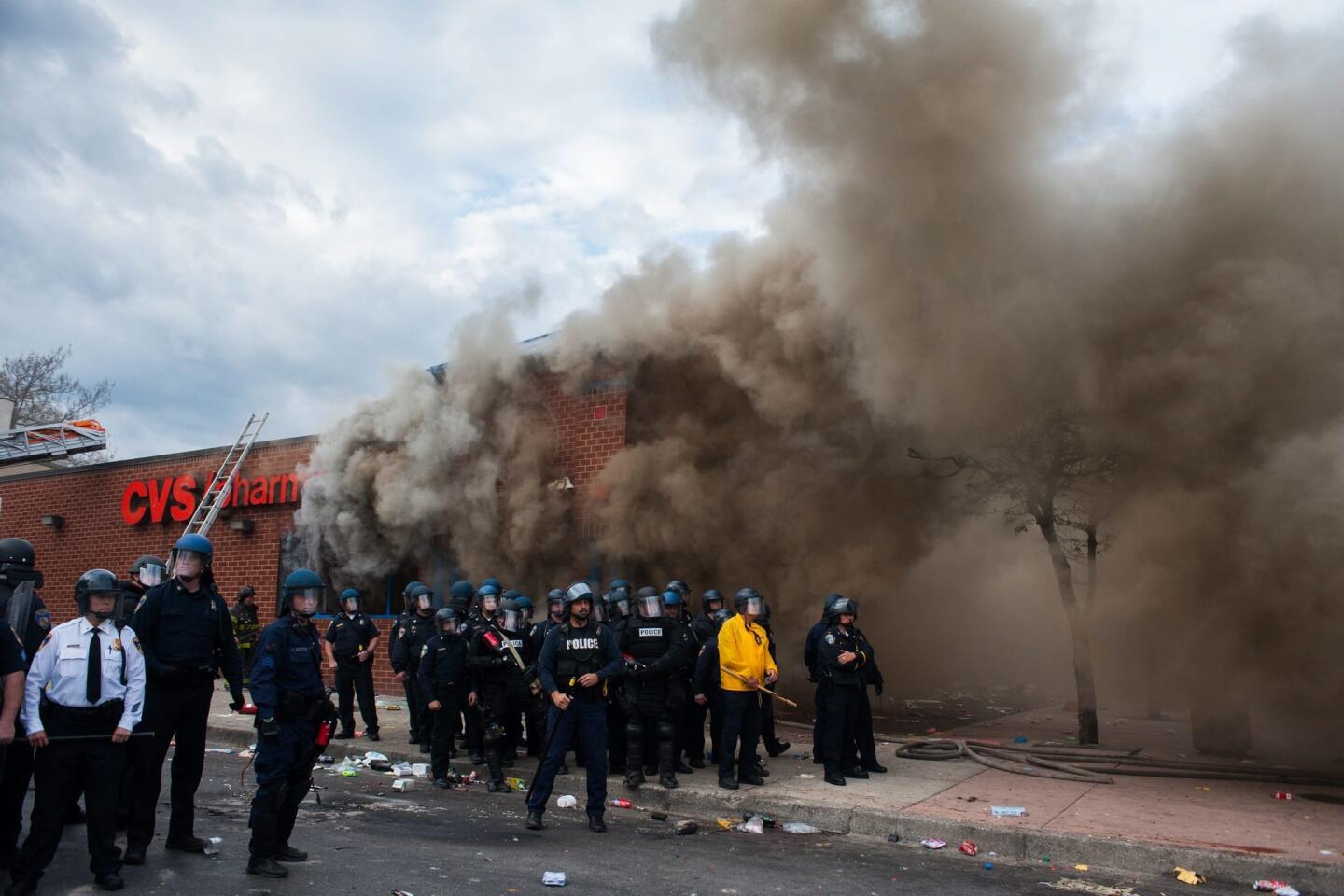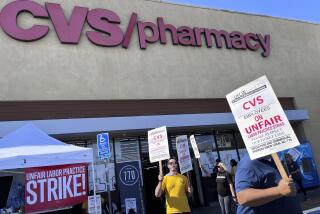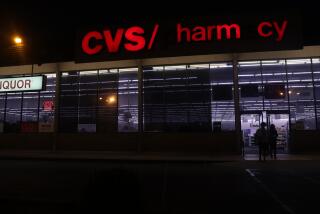CVS pharmacy emerges as symbolic flashpoint of Baltimore riot
Reporting from Baltimore — When riots erupt, whether sparked by protests or natural disaster, a building, a landmark or even an intersection can come to symbolize the magnitude of discord. There is destruction, defense, protest, anger amid the chaos.
In Ferguson, Mo., it was the QuikTrip that burned on Aug. 17 and sent police and protesters careening into each other for weeks. In Los Angeles the intersection of Florence and Normandie -- the site where Reginald Denny was pulled from his truck and beaten hours after the Rodney King verdict in 1992 -- still echoes as a symbol of the city’s racial divide.
In West Baltimore, it is the CVS pharmacy at the corner of West North and Pennsylvania avenues.
Protest, rioting and looting erupted in the neighborhood around the CVS on Monday, spurred by the death of Freddie Gray, a 25-year-old who suffered a spinal cord injury while in police custody and later died.
As night fell, violent crowds busted the pharmacy’s windows out and looters swarmed inside. One image showed a woman carrying out several packages of disposable diapers.
Flames erupted and the fire destroyed an establishment that was supposed to represent one sign of economic renewal in this distressed neighborhood.
In a particularly cruel action, someone slashed one of the hoses that had been turned on the flames.
Baltimore Mayor Stephanie Rawlings-Blake lamented the CVS destruction as a harsh blow to the community.
“What happened last night means that more people are struggling,” she said. “We worked very hard to get CVS to come here.”
The pharmacy, she said, was the only new store in the area where residents could fill prescriptions and purchase sundries. The store provided much-needed jobs.
None of the CVS store’s employees were in the building when looters crashed through the doors; the company shut the store down at 3 p.m.
The CVS store is located on a half-acre parcel, according to 2014 assessor records. Sold in January 2008 for $1.5 million, the property was assessed last year at $1.4 million.
CVS spokeswoman Carolyn Castel said the store served a “great number of people.... We have a long history of serving inner-city communities and we remain committed to serving our patients and customers in Baltimore.”
On Tuesday, while other riot-damaged sites were largely deserted, the CVS hulk drew hundreds of protesters and a phalanx of police armed with shields.
-----------
FOR THE RECORD
April 28, 6:40 p.m.: An earlier version of this post said that on Wednesday the CVS drugstore drew hundreds of protesters. It was on Tuesday.
-----------
Crowds in the street -- one man with a bullhorn -- talked about the death of Freddie Gray.
Through the afternoon more people gathered, and police began handing out more shields, but the crowd remained largely peaceful.
West Baltimore, where CVS was built, did not recover from the recession like Baltimore’s suburbs. But perhaps that’s not surprising.
According to a Knight Foundation-funded nonprofit called City Observatory, which maps poverty in core metro areas, Baltimore’s poor areas tend to stay poor.
City Observatory’s map traces two arms of the Chesapeake Bay that include South Baltimore and the Inner Harbor, areas of relative affluence. One small patch in East Baltimore showed the only area to improve since 1970.
The destroyed CVS is in an area of chronic high poverty.
Hennigan reported from Baltimore, Duara from Phoenix. Times staff writer Shan Li contributed to this story from Los Angeles.
More to Read
Sign up for Essential California
The most important California stories and recommendations in your inbox every morning.
You may occasionally receive promotional content from the Los Angeles Times.
